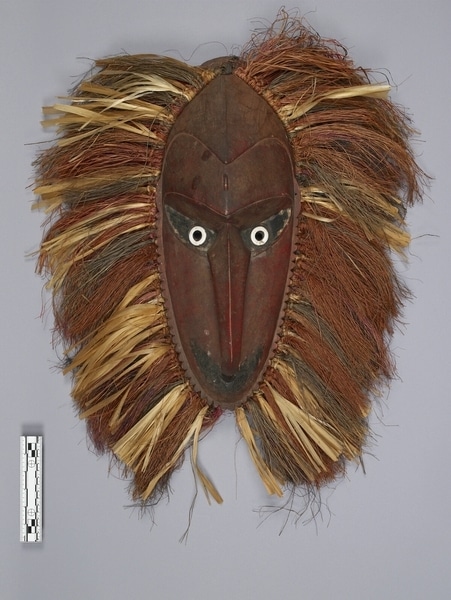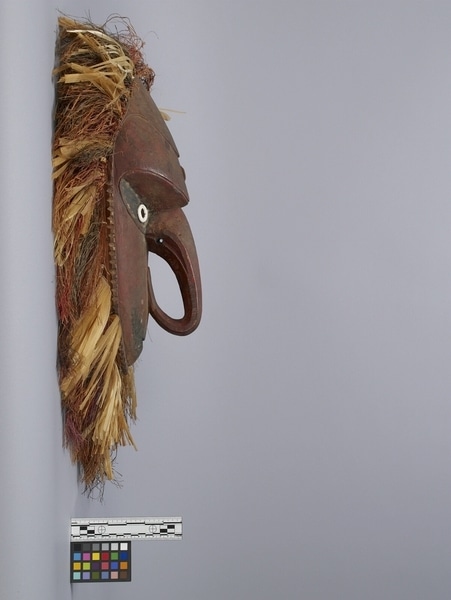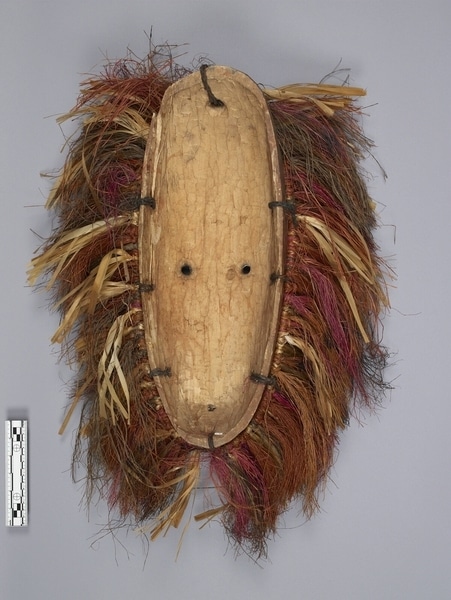Ancestor Mask Item Number: Ie441 from the MOA: University of British Columbia




Description
Large wooden mask. Has a pointed brow with slanted oval eyes that have white rings for irises. Large beaked, inward curving nose which becomes part of the face. The eyes and the mouth areas are painted black with the remainder stained with red ochre. The mouth is very small and has an open u-shape. From ear to ear, there are small notched ridges from around the face. The whole mask is surrounded with grasses and other natural fibres. Eight holes hold grass ring to mask.
History Of Use
Mask used in curing ceremonies, rituals of divination, religious processions and sacred dances for initiations, etc. The masks are part of ancestral spirit worship and embody power, created by secret societies or special groups. Worn by men with a grass or matting skirt which help to disguise the wearer.
Cultural Context
ceremonial; ancestor worship
Narrative
According to the collector's notes this is a Bak dancing mask (in the Murik Lakes style), which originated in a village on a small river just east of the Ramu-Boroi River.
Item History
- Made in Murik Lakes, East Sepik, Papua New Guinea before 1972
- Collected during 1972
- Owned by Roger I. Brookes before May 12, 1982
- Received from Roger I. Brookes (Seller) and Museum of Anthropology Shop Volunteers (Funding source) on May 12, 1982
What
Who
- Culture
- Murik
- Previous Owner
- Roger I. Brookes
- Received from
- Roger I. Brookes (Seller) and Museum of Anthropology Shop Volunteers (Funding source)
Where
- Holding Institution
- MOA: University of British Columbia
- Made in
- Murik Lakes, East Sepik, Papua New Guinea
When
- Creation Date
- before 1972
- Collection Date
- during 1972
- Ownership Date
- before May 12, 1982
- Acquisition Date
- on May 12, 1982
Other
- Condition
- good
- Current Location
- Case 72
- Accession Number
- 0798/0003